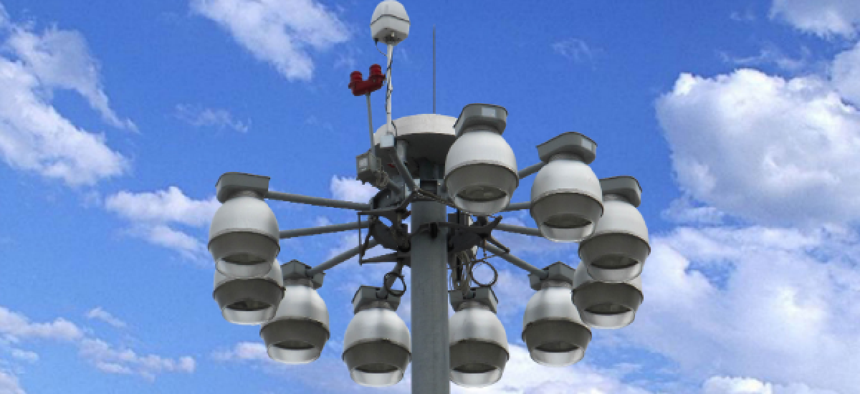World War II tech re-enlists as a smart antenna

“Beamsteering,” which uses antenna arrays to point radio signals at a specific target, is drawing interest from industry and the Defense Department.
Wireless networks have revolutionized mobile computing, but they have faced two major challenges, especially when deployed outdoors: providing coverage where needed and security.
Some are now betting that an older technology that was first applied to radar can make secure wireless coverage in the field more efficient, secure and, yes, more affordable. That technology is beamsteering, which uses phased arrays of antennas to shape electromagnetic wave patterns to direct them toward a specified target.
"Phased arrays in general have been around for more than 50 years," said Joe Carey, CEO of Fidelity Comtech, a wireless communications company based in Longmont, Colo. "They were developed initially in World War II, and they've been used predominantly for radar applications and in electronic warfare. What we're doing is we're taking that technology and commercializing it for wireless data networks."
Ironically, the growth of wireless communications is itself presenting additional challenges that beamsteering – and Fidelity Comtech's Phocus Array product – has the potential to overcome.
In wireless, the advent of smartphones is causing more and more congestion of spectrum," said Carey. Phocus Array allows us to “contour the beam” so that we get coverage where we need it without causing undue interference to adjacent cells. “And we’re also not subjected to undue interference from adjacent cells," he added
The 802.11b/g Phocus Array is an eight-element, circular, phased-array antenna capable of providing dynamic antenna patterns – ranging from a 360-degree omnidirectional pattern to a longer-reaching 43-degree pattern. The pattern can be changed on the fly – in fact, in under 100 microseconds – to focus on particular clients or to avoid interference.
Currently, Carey said, the company’s main market is shipping container yards at ports. “We see it having the most value outdoors, because in the outdoor environment you have a really high cost of siting an installation,” he said. “Obviously putting a smart antenna in an access point or base station increases cost … [but] in an outdoor area, the cost of siting a radio can often far exceed the cost of the radio itself. That's when it makes more sense to invest in a smart antenna.”
As the equipment is getting more accurate and less expensive, Carey said he sees potential for other markets. “We see this having a lot of applicability in real-time location services – being able to track mobile users and, say, unmanned aerial vehicles,” Carey said.
What’s needed to gain accuracy and lower costs? Apart from refining algorithms, the key ingredient in improving phased-array wireless, Carey said, is better semiconductors to run those algorithms on.
“There's an awful lot of computation that goes into these systems,” Carey said, noting that the company is currently using its third generation of calibration algorithms. Specifically, the smart antennas need to compensate for imperfections in the circuit cards of the equipment as well as for noise in the external environment.
“Figuring out how to build these custom antenna patterns took us years,” Carey added. “I was a bit naïve when I started this. One of the things we have struggled with and now we think we have nailed is the interaction between the antenna and the medium access control layer – the interaction between the radio protocol and the way the antenna should behave. It's really complicated. And most of the protocols were not written with the concept of the spherical antenna in mind.”
Fidelity Comtech is also working on a project with the Department of Defense to use the beamsteering capabilities of phased arrays to develop an anti-jam antenna. “If the enemy is trying to jam you, you can put a null on the jammer,” Carey said. “It's a special kind of beamsteering. We can point the beam at the intended receiver and we can form a null simultaneously on the jammer.”
A nulling system measures the amplitude and phase of a signal and generates a counteracting signal that blocks the interference. The same technologies can potentially be used to reduce or eliminate unintentional interference.
“Anyone who has deployed a large wireless data network will tell you that they often don't know when they are getting accidental jamming or intentional jamming,” Carey said. “They just know that their network is not working and they have no idea why. We help them with that.”





